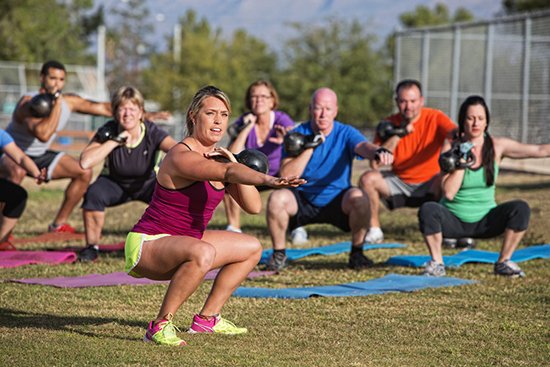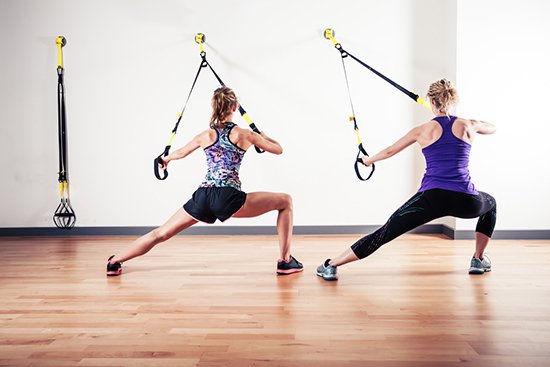
The term “cardio” is oftentimes directly associated with fitness equipment such as the, treadmill, elliptical, stair stepper and stationary bike. Logging endless hours on these machines can be quite repetitive and sometimes boring. Not to worry, there are many ways, such as performing Tabatas, to accomplish cardio that are a little less conventional but way more exciting and highly effective.
Tabatas are a great (and challenging) way to raise the heart rate. A Tabata follows a 2:1 ratio of work to rest for eight rounds. More specifically, the work is performed for 20 seconds, followed by 10 seconds of rest. Tabatas can always be modified and progressed appropriately by staring with fewer rounds, less work time or more rest time.
Tabatas can be performed at the end of weight training circuit to add in a little cardio boost. Here is a standard example:
Speed Squats x 20 seconds
Rest x 10 seconds
Repeat x eight rounds
Tabatas can also be performed using more than one exercise:
Speed Squats x 20 seconds
Rest x 10 seconds
Pushups x 20 seconds
Rest x 10 seconds
Repeat x four rounds

Tabatas can also be linked together for an entire workout, which is a great challenge and perfect for a shorter but extremely effective workout.
Resistance Band Rows x 20 seconds
Rest x 10 seconds
Repeat x eight rounds
Speed Squats x 20 seconds
Rest x 10 seconds
Repeat x eight rounds
Pushups x 20 seconds
Rest x 10 seconds
Repeat x eight rounds
Kettlebell Swings x 20 seconds
Rest x 10 seconds
Repeat x eight rounds
Jason DeHenzel has trained some of New York’s most prestigious clients, including high-profile lawyers, advertising executives, movie producers and musicians. Sophie DeHenzel is a Pn1-certified nutritionist and former downhill ski racer. The pair founded DeHenzel Training Systems to develop customized fitness plans for clients of different abilities, experience and commitment. Find out more at dtsnova.com.


